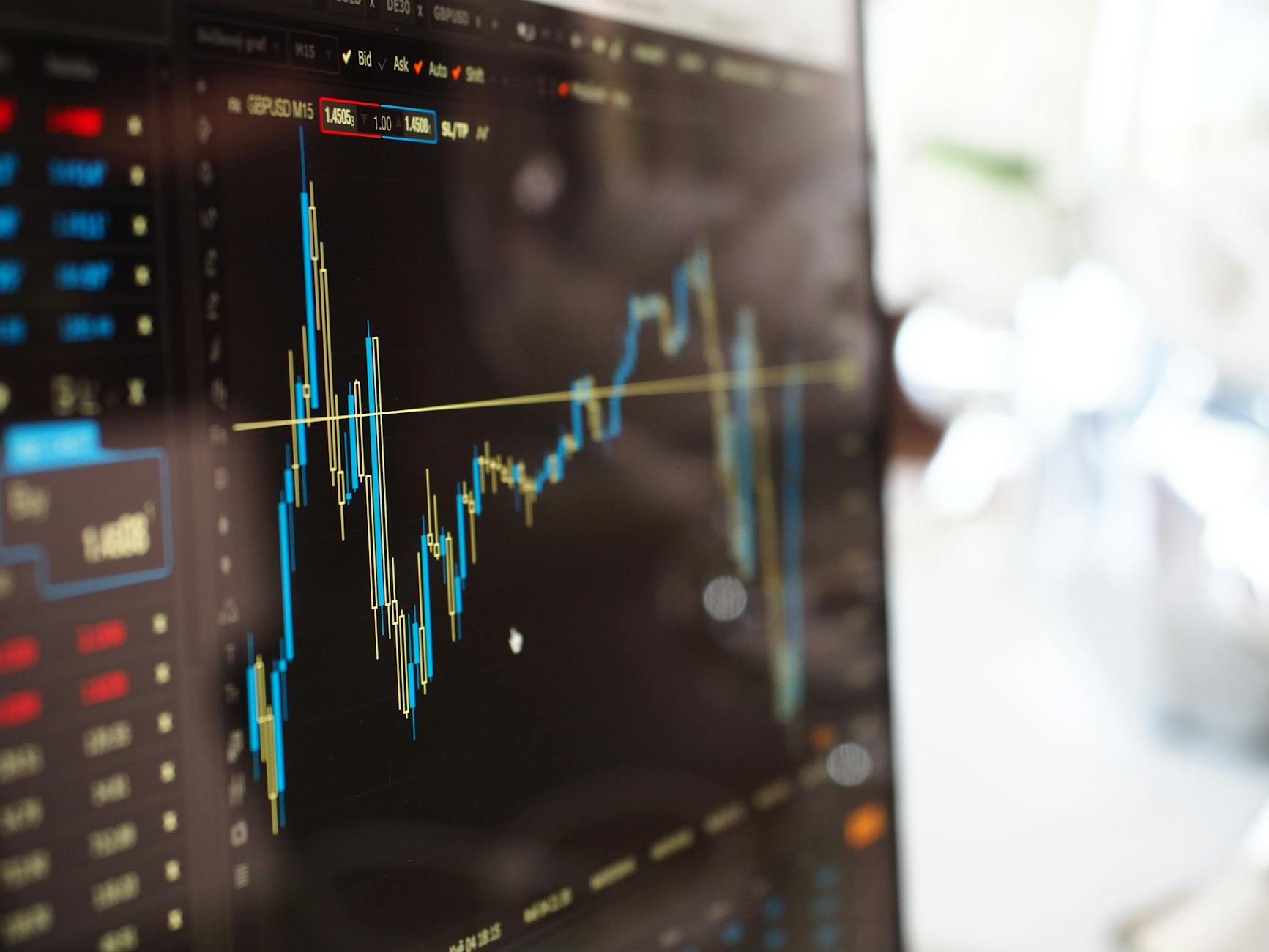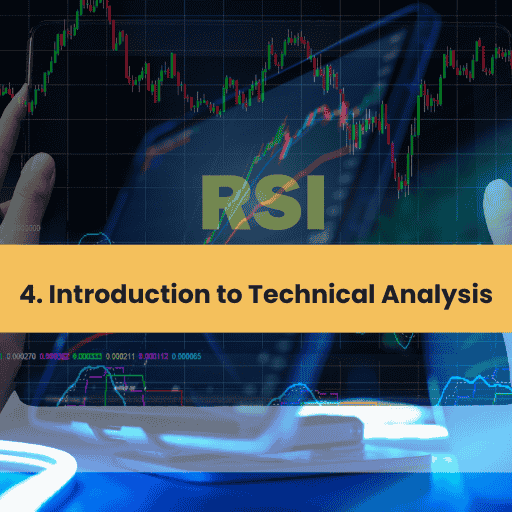Have you ever felt overwhelmed by the sea of charts, indicators, and patterns in the world of trading? You’re not alone. Many investors find themselves lost in the complex realm of Technical Analysis, unsure of how to navigate its intricacies. But what if you could unlock the secrets hidden within those charts and gain a powerful edge in your trading decisions? 🔍📊
Imagine being able to predict market movements with greater accuracy, identify optimal entry and exit points, and make more informed investment choices. That’s the promise of Technical Analysis – a methodology that has been used by successful traders for decades. In this comprehensive guide, we’ll demystify the world of Technical Analysis, breaking down its key components, popular tools, and practical applications. Whether you’re a novice trader or looking to refine your skills, this journey through the fundamentals of Technical Analysis will equip you with the knowledge to elevate your trading game. Let’s dive into the fascinating world of charts, patterns, and indicators that could transform your approach to the markets. 📈💡

Understanding Technical Analysis
Definition and Core Principles
Technical analysis is a method of evaluating securities by analyzing statistical trends gathered from trading activity, such as price movement and volume. At its core, technical analysis operates on three key principles:
- Market action discounts everything
- Prices move in trends
- History tends to repeat itself
These principles form the foundation of technical analysis, guiding traders and investors in their decision-making process.
Importance in Trading and Investing
Technical analysis plays a crucial role in trading and investing for several reasons:
- Timing: Helps determine optimal entry and exit points
- Risk management: Aids in setting stop-loss levels
- Trend identification: Assists in recognizing market trends
- Versatility: Applicable across various financial instruments and timeframes
Comparison with Fundamental Analysis
While both technical and fundamental analysis aim to predict future price movements, they differ in their approach:
| Aspect | Technical Analysis | Fundamental Analysis |
|---|---|---|
| Focus | Price and volume data | Company and economic factors |
| Timeframe | Short to medium-term | Long-term |
| Data used | Charts and statistical indicators | Financial statements, economic reports |
| Assumption | All relevant information is reflected in price | Markets may misprice assets |
Technical analysis provides a complementary approach to fundamental analysis, offering insights into market psychology and short-term price movements. By combining both methods, investors can develop a more comprehensive understanding of market dynamics and make informed decisions.

Key Components of Technical Analysis
Technical analysis relies on several key components to interpret market behavior and make informed trading decisions. Let’s explore these essential elements:
A. Price Charts and Their Types
Price charts are the foundation of technical analysis, providing a visual representation of price movements over time. There are several types of charts commonly used:
- Line charts
- Bar charts
- Candlestick charts
- Point and figure charts
Here’s a comparison of the most popular chart types:
| Chart Type | Pros | Cons |
|---|---|---|
| Line | Simple, easy to read | Limited price information |
| Bar | Shows open, high, low, close | Can be cluttered |
| Candlestick | Visually appealing, shows price action | Learning curve for interpretation |
| Point and Figure | Filters out noise, focuses on significant moves | Time is not a factor |
B. Trends and Trend Lines
Trends are the overall direction of price movements, which can be:
- Uptrend (higher highs and higher lows)
- Downtrend (lower highs and lower lows)
- Sideways (ranging market)
Trend lines are drawn to connect a series of highs or lows, helping traders identify the direction and strength of a trend.
C. Support and Resistance Levels
Support and resistance levels are price points where:
- Support: The price tends to stop falling and may bounce upward
- Resistance: The price tends to stop rising and may reverse downward
These levels are crucial for:
- Identifying potential entry and exit points
- Setting stop-loss orders
- Predicting potential trend reversals
D. Volume Indicators
Volume indicators provide insights into the strength of price movements. They help traders:
- Confirm trends
- Identify potential reversals
- Gauge market interest
Popular volume indicators include:
- On-Balance Volume (OBV)
- Volume Price Trend (VPT)
- Chaikin Money Flow (CMF)
Understanding these key components of technical analysis is crucial for developing a solid foundation in this approach to market analysis. Next, we’ll explore some popular technical analysis tools that build upon these fundamental concepts.

Popular Technical Analysis Tools
Technical analysis offers a wide array of tools to help traders and investors make informed decisions. Let’s explore some of the most popular and effective tools used in technical analysis:
A. Moving Averages
Moving averages are among the most versatile and widely used technical indicators. They help smooth out price data by creating a constantly updated average price over a specific time period.
- Simple Moving Average (SMA): Calculates the average price over a set number of periods
- Exponential Moving Average (EMA): Gives more weight to recent prices, making it more responsive to new information
B. Relative Strength Index (RSI)
The RSI is a momentum oscillator that measures the speed and change of price movements. It oscillates between 0 and 100 and is typically used to identify overbought or oversold conditions in a traded security.
| RSI Value | Interpretation |
|---|---|
| Above 70 | Overbought |
| Below 30 | Oversold |
| 50 | Neutral |
C. Bollinger Bands
Bollinger Bands consist of a middle band (usually a simple moving average) and two outer bands that are standard deviations away from the middle band. They help identify:
- Volatility: Wide bands indicate high volatility, narrow bands suggest low volatility
- Potential reversal points: Price touching the outer bands may indicate a reversal
D. MACD (Moving Average Convergence Divergence)
The MACD is a trend-following momentum indicator that shows the relationship between two moving averages of a security’s price. It consists of:
- MACD line
- Signal line
- Histogram
Traders use MACD to identify potential buy and sell signals, as well as trend direction and momentum.
E. Fibonacci Retracements
Fibonacci retracements are based on the key numbers identified by mathematician Leonardo Fibonacci. In technical analysis, they are used to identify potential support and resistance levels.
Common Fibonacci retracement levels:
- 23.6%
- 38.2%
- 50%
- 61.8%
These tools provide valuable insights into market trends, momentum, and potential reversal points. However, it’s important to remember that no single tool is infallible, and combining multiple indicators often yields the best results.
Next, we’ll explore how these tools manifest in various chart patterns, providing even more insights for technical analysts.

Chart Patterns in Technical Analysis
Chart patterns are visual representations of price movements that can help traders predict future market behavior. Understanding these patterns is crucial for effective technical analysis. Let’s explore some of the most common and reliable chart patterns.
A. Head and Shoulders
The head and shoulders pattern is a reversal pattern that often signals a trend change from bullish to bearish. It consists of:
- Left shoulder: An initial peak
- Head: A higher peak
- Right shoulder: A lower peak similar to the left shoulder
| Component | Description | Significance |
|---|---|---|
| Neckline | Support line connecting the troughs | Breakout point |
| Volume | Often decreases as pattern forms | Confirms pattern |
| Price target | Measured from neckline to head | Potential downside |
B. Double Tops and Bottoms
Double tops and bottoms are reversal patterns that indicate a potential change in trend direction.
- Double Top: Bearish reversal pattern
- Double Bottom: Bullish reversal pattern
These patterns form when price reaches a certain level twice but fails to break through, suggesting a strong resistance or support level.
C. Triangle Patterns
Triangle patterns are continuation patterns that can indicate a temporary pause in the current trend. There are three main types:
- Ascending Triangle: Bullish pattern with a flat upper trendline
- Descending Triangle: Bearish pattern with a flat lower trendline
- Symmetrical Triangle: Neutral pattern with converging trendlines
D. Flag and Pennant Patterns
Flag and pennant patterns are short-term continuation patterns that occur during strong trends.
- Flag: Rectangular shape against the prevailing trend
- Pennant: Small symmetrical triangle
Both patterns typically form after a sharp price movement and suggest a brief consolidation before the trend continues.
Now that we’ve covered these essential chart patterns, let’s explore how to apply technical analysis in real-world trading scenarios.

Applying Technical Analysis in Practice
Now that we’ve covered the fundamentals of technical analysis, let’s explore how to put this knowledge into action. Applying technical analysis effectively requires a combination of skill, discipline, and continuous learning.
Identifying Entry and Exit Points
Identifying optimal entry and exit points is crucial for successful trading. Here are some key strategies:
- Use support and resistance levels to pinpoint potential entry and exit zones
- Look for chart pattern breakouts or breakdowns
- Employ moving averages to identify trend reversals
- Utilize momentum indicators like RSI or MACD for timing
| Strategy | Entry Point | Exit Point |
|---|---|---|
| Support/Resistance | Buy near support, sell near resistance | Take profit at resistance, stop loss below support |
| Chart Patterns | Enter on breakout confirmation | Exit at pattern price target or on reversal signals |
| Moving Averages | Buy on golden cross, sell on death cross | Exit when price closes below/above MA |
| Momentum | Enter when indicator shows oversold/overbought | Exit on divergence or signal line crossover |
Risk Management Strategies
Effective risk management is essential for long-term trading success. Consider these approaches:
- Set stop-loss orders to limit potential losses
- Use a fixed risk percentage per trade (e.g., 1-2% of account balance)
- Implement trailing stops to protect profits
- Diversify your portfolio to spread risk
Combining Multiple Indicators
Using multiple indicators can provide more robust trading signals:
- Combine trend-following indicators with oscillators
- Use volume indicators to confirm price movements
- Employ different timeframes for a comprehensive market view
Backtesting and Optimization
To refine your strategy:
- Backtest your trading system using historical data
- Optimize indicator parameters for better performance
- Keep a trading journal to track and analyze your decisions
By applying these practical techniques, you’ll be better equipped to navigate the markets using technical analysis. Next, we’ll explore common pitfalls to avoid in your technical analysis journey.
Common Pitfalls and How to Avoid Them
As we delve deeper into technical analysis, it’s crucial to understand the common pitfalls that traders often encounter and learn how to avoid them. By being aware of these challenges, you can improve your trading strategy and achieve better results.
A. Over-reliance on single indicators
One of the most frequent mistakes in technical analysis is placing too much emphasis on a single indicator. While individual indicators can provide valuable insights, they should not be used in isolation. To avoid this pitfall:
- Use multiple indicators: Combine different types of indicators (trend, momentum, volume) to get a more comprehensive view of the market.
- Confirm signals: Look for confirmation from other indicators or chart patterns before making trading decisions.
- Understand indicator limitations: Recognize that no single indicator is perfect and each has its strengths and weaknesses.
B. Ignoring broader market context
Technical analysis should not be performed in a vacuum. Failing to consider the broader market context can lead to misinterpretation of signals. To overcome this:
- Monitor multiple timeframes: Analyze charts across different timeframes to gain a more holistic view of market trends.
- Stay informed about fundamentals: Keep track of important economic events, news, and company announcements that may impact price movements.
- Consider market sentiment: Use sentiment indicators and tools to gauge overall market mood and investor psychology.
C. Emotional decision-making
Emotions can cloud judgment and lead to poor trading decisions. To avoid emotional pitfalls:
- Develop a trading plan: Create and stick to a well-defined trading strategy with clear entry and exit points.
- Use stop-loss orders: Set predetermined stop-loss levels to limit potential losses and remove emotion from the decision to exit a trade.
- Practice risk management: Allocate appropriate position sizes and maintain a balanced portfolio to reduce emotional stress.
D. Failing to adapt to changing market conditions
Markets are dynamic, and what works in one market condition may not work in another. To stay adaptable:
- Regularly review and update your strategy: Assess the effectiveness of your technical analysis approach and make adjustments as needed.
- Be open to learning: Stay informed about new technical analysis tools and techniques, and be willing to incorporate them into your strategy when appropriate.
- Backtest and forward test: Use historical data to test your strategies and validate them in real-time market conditions before implementing them fully.
| Pitfall | Avoidance Strategy |
|---|---|
| Over-reliance on single indicators | Use multiple indicators, confirm signals, understand limitations |
| Ignoring broader market context | Monitor multiple timeframes, stay informed about fundamentals, consider market sentiment |
| Emotional decision-making | Develop a trading plan, use stop-loss orders, practice risk management |
| Failing to adapt to changing market conditions | Regularly review and update strategy, be open to learning, backtest and forward test |
By being aware of these common pitfalls and implementing strategies to avoid them, you can enhance your technical analysis skills and improve your trading performance. Next, we’ll explore some advanced technical analysis concepts to further refine your approach.

Advanced Technical Analysis Concepts
As we delve deeper into the world of technical analysis, let’s explore some advanced concepts that can elevate your trading strategies to new heights.
Elliot Wave Theory
The Elliot Wave Theory is a complex method of market analysis that suggests price movements follow predictable patterns or “waves.” This theory posits that market trends can be identified through a series of five waves in the direction of the main trend, followed by three corrective waves.
- Wave 1: Initial move upward
- Wave 2: Partial retracement
- Wave 3: Strongest and longest wave
- Wave 4: Corrective wave
- Wave 5: Final leg up
Harmonic Patterns
Harmonic patterns are precise geometric price patterns that help traders identify potential reversal points in the financial markets. These patterns are based on Fibonacci ratios and can provide specific entry and exit points.
| Pattern Name | Key Characteristics |
|---|---|
| Gartley | ABCD pattern with specific Fibonacci ratios |
| Butterfly | Extension of the Gartley pattern |
| Bat | Similar to Gartley but with different ratios |
| Crab | Extreme harmonic pattern with largest price moves |
Intermarket Analysis
Intermarket analysis involves studying the relationships between different asset classes and how they affect each other. This approach can provide valuable insights into market trends and potential turning points.
- Stocks and bonds
- Commodities and currencies
- Domestic and international markets
Algorithmic Trading Based on Technical Indicators
Algorithmic trading uses computer programs to execute trades based on predefined rules, often incorporating technical indicators. This advanced approach allows for:
- Rapid execution of complex strategies
- Backtesting and optimization of trading systems
- Elimination of emotional decision-making
By mastering these advanced technical analysis concepts, traders can gain a deeper understanding of market dynamics and potentially improve their trading outcomes. Next, we’ll explore how to apply these concepts in real-world trading scenarios.

Technical analysis is a powerful tool for investors and traders seeking to make informed decisions in the financial markets. By studying price patterns, trends, and indicators, market participants can gain valuable insights into potential future price movements. From understanding basic concepts like support and resistance to exploring advanced techniques such as Elliott Wave Theory, technical analysis offers a wide range of strategies to suit different trading styles and risk tolerances.
As you embark on your journey into technical analysis, remember that practice and continuous learning are essential. While this powerful approach can enhance your trading decisions, it’s crucial to combine it with fundamental analysis and proper risk management. By mastering the art of technical analysis and avoiding common pitfalls, you’ll be better equipped to navigate the complex world of financial markets and potentially improve your trading outcomes.


